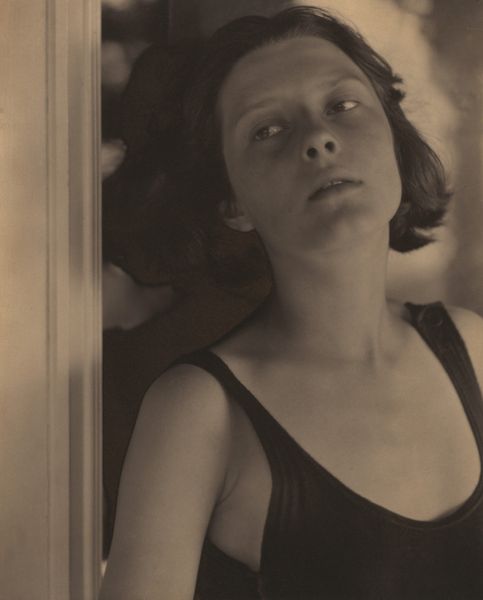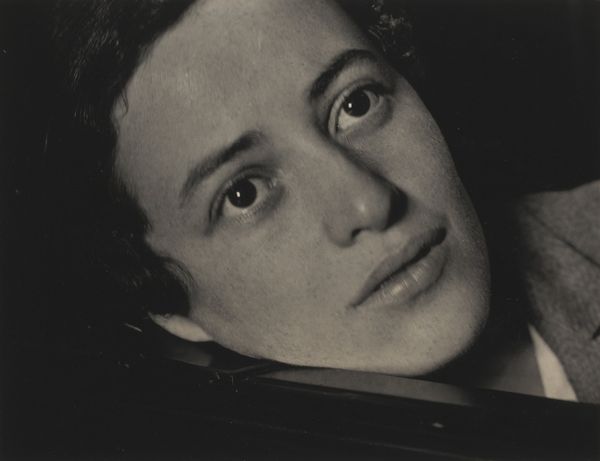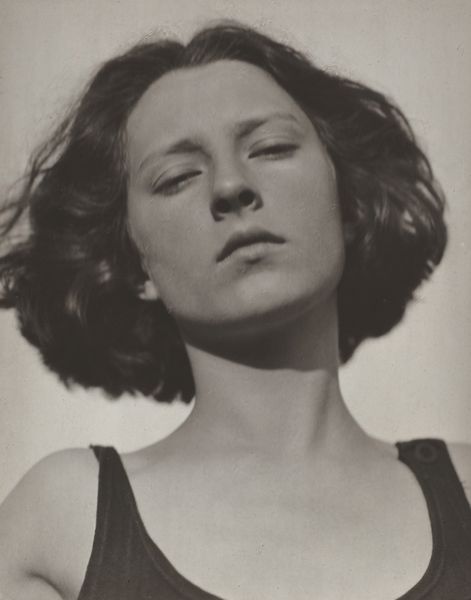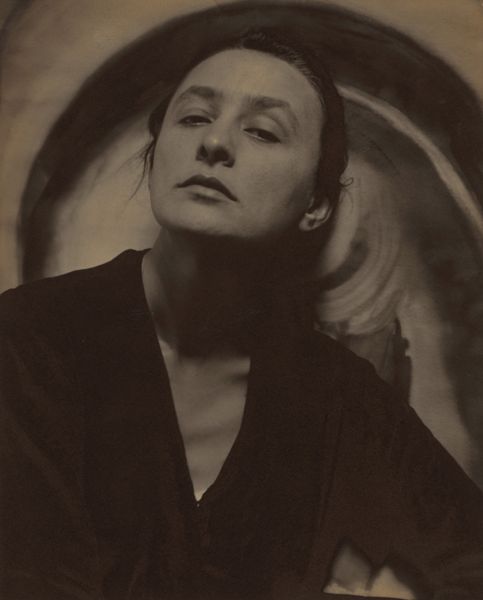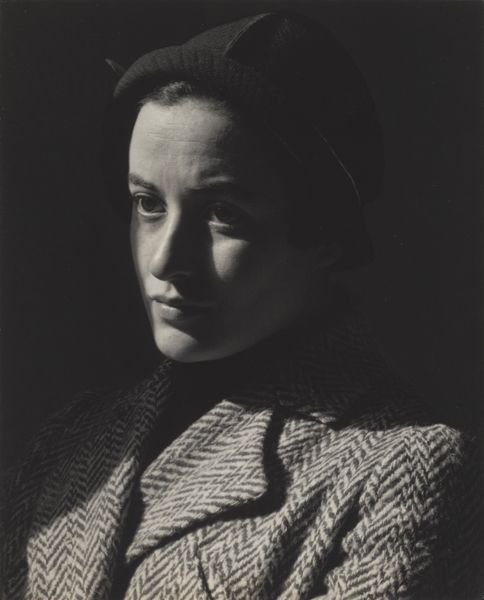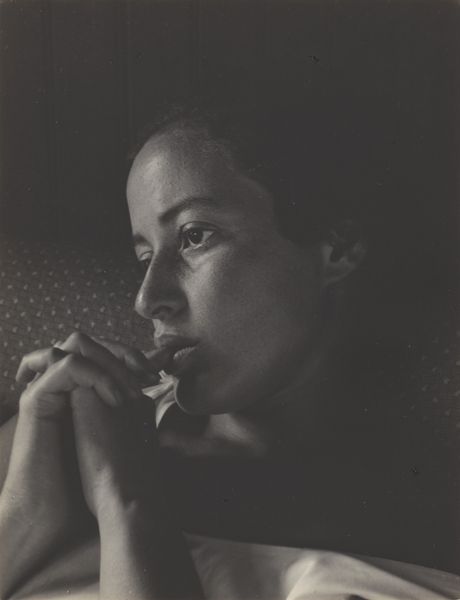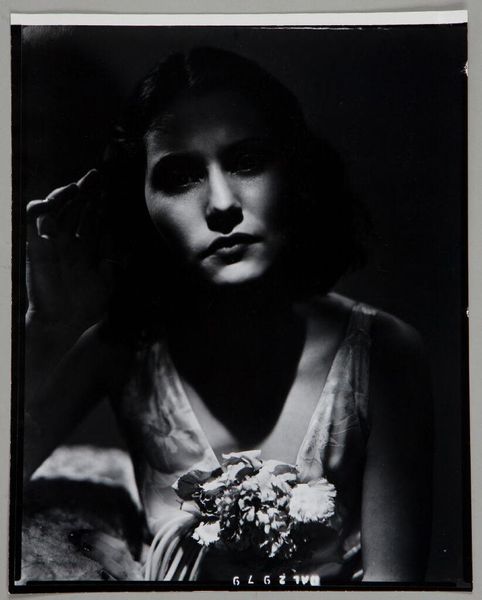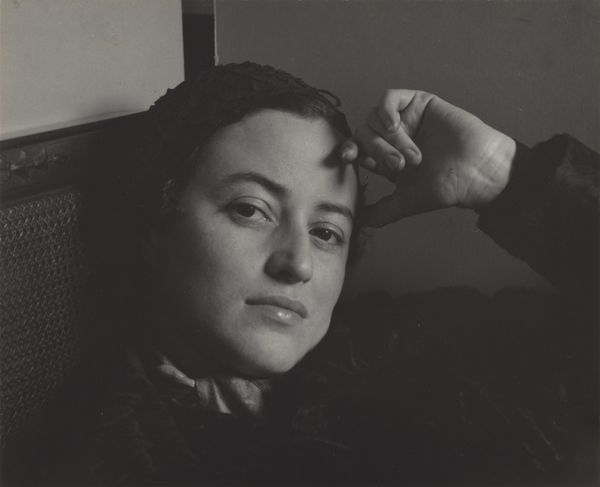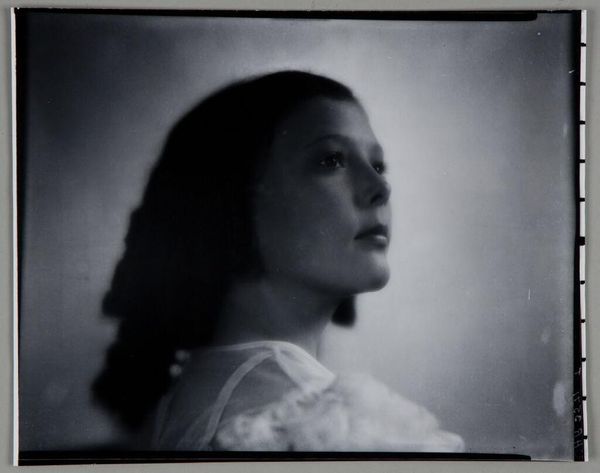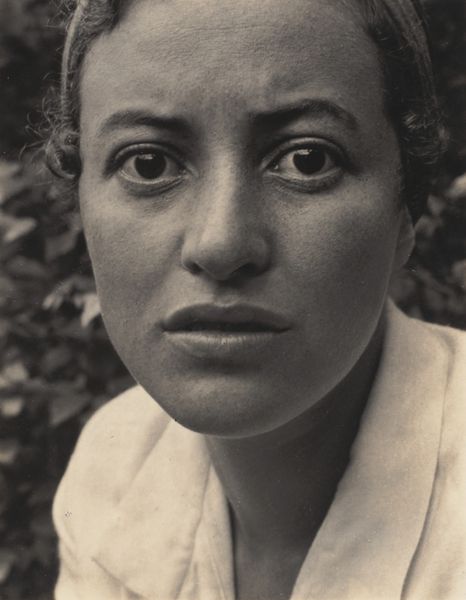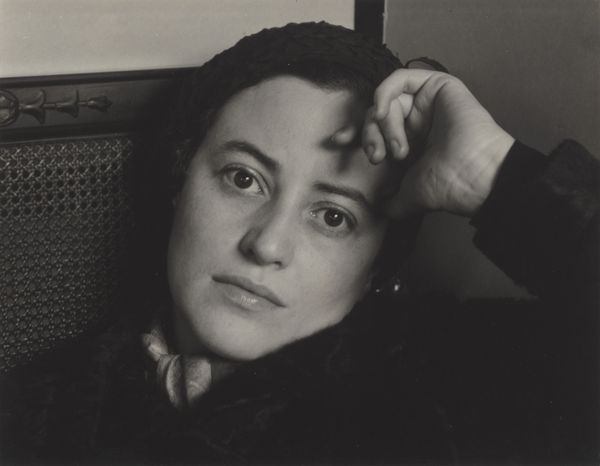
Dimensions: height 130 mm, width 180 mm
Copyright: Rijks Museum: Open Domain
Curator: What strikes me immediately about this photograph is the deep shadow obscuring half the actress's face. There's something profoundly unsettling about it. Editor: And that, I think, captures the essence of the work. This gelatin-silver print is a still from the 1946 film *Die Mörder sind unter uns*, or *The Murderers Are Among Us*, featuring Hildegard Knef. Curator: Knef's gaze is intense, almost accusatory. You can feel the weight of the post-war atmosphere, that reckoning with collective guilt, lingering. I think her direct look transcends the individual, becoming a representation of women rebuilding society amidst trauma. Editor: Absolutely. The film itself, Germany’s first Trümmerfilm, directly confronted the devastation and moral complexities facing the country after the war. This publicity still, I would argue, plays a critical role in how the film reached its audience. Curator: The image's expressionistic qualities—that stark contrast, the off-kilter framing—it all feeds into this sense of psychological unease. Was this intentional for film marketing? I’m especially intrigued by how the medium, the gelatin-silver print, impacts reception, offering both immediate emotional impact, while still acting as a social, cultural, and historical document. Editor: Precisely. It encapsulates a societal mood. The stark, high-contrast photography mirrors the difficult truths being brought to light through the narrative of the film. There is also the marketing aspect, of course, showing off Germany’s most popular movie actress at the time. Knef defied societal standards with a complex public persona. The photograph adds to the allure and ultimately asks, ‘What do we do with those shadows, both literally and figuratively?’ Curator: And what about her clothing? It's almost... utilitarian, stripped of any glamour, aligning with the somber reality of the time. I am thinking of feminist theories around visibility of women on-screen, or rather its antithesis – is Knef offering the audience something, but obscuring another part of herself through shadow? Editor: A fascinating point. Considering Knef's persona and how this image functioned both within the film's promotion and the broader context of postwar Germany…it truly encourages one to think. Curator: Agreed. It’s more than just a film still, it is an emblem of a generation grappling with profound moral questions and looking toward the future with uncertain hope.
Comments
No comments
Be the first to comment and join the conversation on the ultimate creative platform.
